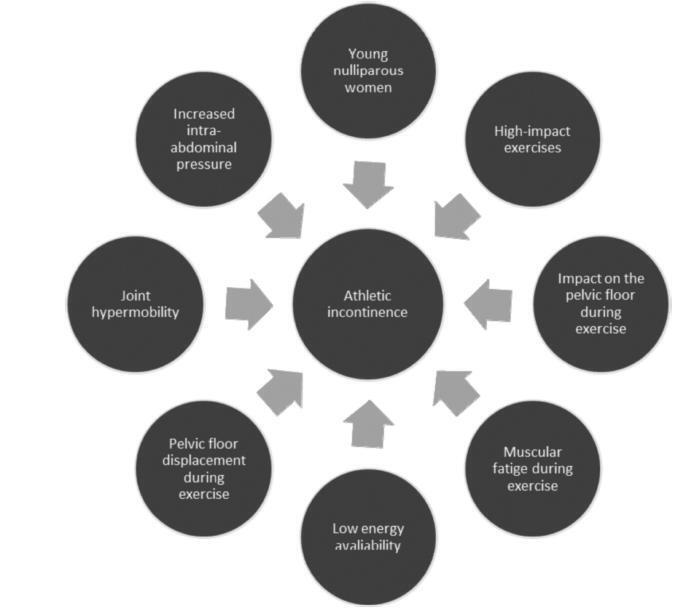-
Editorial03-01-2018
Strategy for Zero Maternal Deaths by Hemorrhage in Brazil: A Multidisciplinary Initiative to Combat Maternal Morbimortality
Revista Brasileira de Ginecologia e Obstetrícia. 2018;40(3):103-105
Abstract
EditorialStrategy for Zero Maternal Deaths by Hemorrhage in Brazil: A Multidisciplinary Initiative to Combat Maternal Morbimortality
Revista Brasileira de Ginecologia e Obstetrícia. 2018;40(3):103-105
Views161Scenario of Maternal Mortality by Obstetric Hemorrhage Obstetric hemorrhage is one of the leading causes of preventable maternal deaths in the world. There are 14 million cases of postpartum hemorrhage and 140 thousand related deaths annually worldwide. There is also a large contingent of women who survive a postpartum hemorrhage event with related reproductive and […]See more -
Editorial02-01-2018
Hormonal Contraceptives and Risk of Breast Cancer: How to Explain it without Controversy
Revista Brasileira de Ginecologia e Obstetrícia. 2018;40(2):57-58
Abstract
EditorialHormonal Contraceptives and Risk of Breast Cancer: How to Explain it without Controversy
Revista Brasileira de Ginecologia e Obstetrícia. 2018;40(2):57-58
Views96Globally, hormonal contraceptives (HCs) are used by approximately 13% of the female population between 15 and 49 years old, which, in absolute numbers, represents 140 million women. In Brazil, where the rates of tubal ligation are 29%, HCs are used by approximately 30% of women of reproductive age. The roles of the hormones contained in […]See more -
Editorial01-01-2018
Do Brazilian Pregnant Women Need Iodine Supplementation? A Commentary on the Latest American Thyroid Association Guideline
Revista Brasileira de Ginecologia e Obstetrícia. 2018;40(1):01-03
Abstract
EditorialDo Brazilian Pregnant Women Need Iodine Supplementation? A Commentary on the Latest American Thyroid Association Guideline
Revista Brasileira de Ginecologia e Obstetrícia. 2018;40(1):01-03
Views99Iodine is an essential micronutrient required for the production of thyroid hormones, which are critical for homeostasis and neurodevelopment. Because of increased thyroid hormone production, renal iodine excretion and fetal iodine requirements, dietary iodine requirements are higher in pregnancy than they are for nonpregnant adults. Based on this, the World Health Organization (WHO) and the […]See more -
Editorial12-01-2017
Ob-Gyn Gender Preferences of Gynecology Ambulatory Patients and Students’ Choice of the Specialty
Revista Brasileira de Ginecologia e Obstetrícia. 2017;39(12):645-646
Abstract
EditorialOb-Gyn Gender Preferences of Gynecology Ambulatory Patients and Students’ Choice of the Specialty
Revista Brasileira de Ginecologia e Obstetrícia. 2017;39(12):645-646
Views120In a systematic review and meta-analysis of 23 studies from different countries worldwide, Tobler et al reported that when choosing an Ob-Gyn physician, 8.3% of the patients investigated preferred a male physician, 50.2% reported a preference for a female physician, and 41.3% indicated no gender preference. Notably, the data from the United States sub analysis […]See more -
Editorial11-01-2017
What Value is there in Assessing Postmenopausal Women for Vitamin D Deficiency?
Revista Brasileira de Ginecologia e Obstetrícia. 2017;39(11):585-586
Abstract
EditorialWhat Value is there in Assessing Postmenopausal Women for Vitamin D Deficiency?
Revista Brasileira de Ginecologia e Obstetrícia. 2017;39(11):585-586
Views82Vitamin D is included, along with thyroid and steroid hormones, within the unique category of endocrine molecules that act through nuclear receptors. Differently from its partners, until recently vitamin D was thought to be a specialized hormone with an action limited to the control of mineral and bone metabolism. The misconception has been recently reviewed […]See morePlumX Metrics
- Citations
- Citation Indexes: 1
- Usage
- Full Text Views: 899
- Abstract Views: 1
- Captures
- Readers: 15
-
Editorial10-01-2017
What are the Possibilities of Uterine Transplantation in Transgender Patients?
Revista Brasileira de Ginecologia e Obstetrícia. 2017;39(10):521-522
Abstract
EditorialWhat are the Possibilities of Uterine Transplantation in Transgender Patients?
Revista Brasileira de Ginecologia e Obstetrícia. 2017;39(10):521-522
Views123Currently, there are heated discussions about the linguistic limitations of the binary gender model for the representation of the various forms of gender expression. In Anglo-Saxon countries, the possibility of using gender-neutral articles and pronouns is being discussed, while in our Brazilian population, the gender derivation vowel of pronouns is sometimes substituted by the ‘@’ […]See more -
Editorial09-01-2017
Athletic Incontinence: Proposal of a New Term for a NewWoman
Revista Brasileira de Ginecologia e Obstetrícia. 2017;39(9):441-442
Abstract
EditorialAthletic Incontinence: Proposal of a New Term for a NewWoman
Revista Brasileira de Ginecologia e Obstetrícia. 2017;39(9):441-442
Views114In 1896, Baron Pierre de Coubertin inaugurated the first modern era Olympic Games. At that time, women could not participate in the competitions, as sports in general were considered dangerous for women’s health. At the Paris Olympics (1900), of the 997 enrolled athletes, 22 were women who competed in sailing, tennis and golf. Women’s participation […]See more
-
Editorial08-01-2017
Barriers to Implementing and Consolidating a Family Planning Program that would meet Brazilian Needs
Revista Brasileira de Ginecologia e Obstetrícia. 2017;39(8):373-375
Abstract
EditorialBarriers to Implementing and Consolidating a Family Planning Program that would meet Brazilian Needs
Revista Brasileira de Ginecologia e Obstetrícia. 2017;39(8):373-375
Views98Around 50–55% of all births in Brazil are unplanned, and these figures include both unwanted and mistimed pregnancies. The overall rate of induced abortion is estimated at 1.5%, with all induced abortions resulting from unplanned pregnancies culminating in an adjusted abortion rate of 2.7%. In many cases, unplanned pregnancies terminate in induced abortions and, since […]See morePlumX Metrics
- Citations
- Citation Indexes: 3
- Policy Citations: 1
- Usage
- Full Text Views: 1260
- Captures
- Readers: 23



